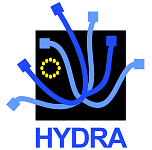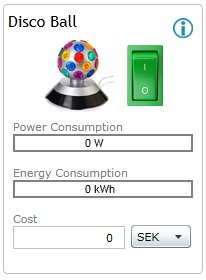- 09 Jun 2007
- Related projects
- 4520 Reads
Full Name: | Reconfigurable Ubiquitous Networked Embedded Systems | |
Basic data: | Type of the project: | EU IST FP6 project, Integrated Project |
| IST SO: | Embedded systems | |
| Project Reference: | 004536 | |
| Launch: | September 2004 | |
| Duration: | 32 months | |
| Consortium: | 21 partners from 8 countries | |
| Coordinator: | Ericsson AB, Sweden | |
Website | http://www.ist-runes.org/ | |
Description: | RUNES is very similar to HYDRA project, while its main objective is to design a middleware system that is adaptive and intelligently self-organizing. RUNES (Reconfigurable Ubiquitous Networked Embedded Systems) investigates and develops solutions for supporting applications and services running on heterogeneous architectures of networked embedded systems. For this support an adaptive and intelligently self-organizing middleware is important. The communication between different instantiations of the middleware running on the distributed embedded systems often requires secure communications services. RUNES aims to provide an adaptive middleware platform and application development tools that allow programmers the flexibility to interact with the environment where necessary, whilst affording a level of abstraction that facilitates ease of application construction and use. The respective security functionality has to be set up automatically and has to satisfy the needs of heterogeneous platforms. Possible application scenarios are similar to HYDRA project - healthcare, factory automation, retail settings, in-home safety and security and many more. Especially in healthcare scenario security and privacy issues are important in emergency response systems, since medical records should remain private. However in a large-scale emergency, particularly one involving rescue teams from many organizations, these concerns are likely to decrease in importance compared to those associated with dealing with data from large numbers of people, how to react when personnel or casualties show a significant change in status, and transferring data from patients to hospitals. | |
| Relevance to HYDRA: | RUNES identified several
security requirements on such a middleware. The middleware must allow
components to specify their security behavior and dependencies.
There must be a semantically well-defined specification mechanism by
which the security properties of middleware components can be specified
and that allows the specification of constraints on the security
properties of those components to which they are bound, possibly
indirectly, if their own security properties are to hold. The
architecture must constrain device operation in the way specified by the
security policy through the concept of a policy enforcement point. In
order to do this, the architecture should ensure that the following
information is accessible: data sensitivity, application state, internal
system state, external context information, and trust relationships. It
must be possible to determine whether combinations of components satisfy
security policy in any given context. Important inspiration of RUNES project is the implementation of semantic technologies for representation of security constraints designating the behavior and access of several components in the system. HYDRA should take into account the semantic modeling of properties and roles for devices, sensors and users in the specific context of the specific application. Another important attribute of RUNES is the adaptation and intelligent self-organization. HYDRA should focus on intelligent security solutions covering the adaptation and learning of devices, sensors and user interfaces to local and specific situations on the semantic level. Roles, identities, federations, access control can be modeled, but particular components should be also prepared for learning and adaptation to unexpected situations. Although the response to a road tunnel fire incident is the subject of the RUNES demonstrator, project RUNES used as case studies also the applications domains similar to those of HYDRA. Namely: in-home safety and security, emergency services and healthcare. | |





 The Hydra project is co-funded by the
The Hydra project is co-funded by the 


